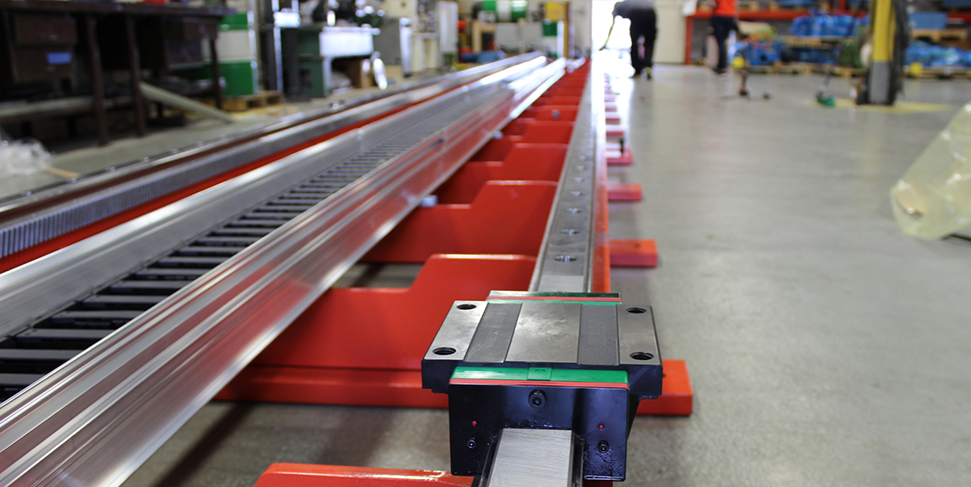
Lazerarc Blog
INTRODUCTION TO LINEAR TRANSFER SYSTEMS
What are Linear Transfer Units?
Linear Transfer Units are a means of transporting items, often robots or components needed for production by a robot, from one point in the production process to another for further processing. They provide a means for one robot to be more versatile on the track, meeting demand in multiple locations, or components being delivered directly to a stationary one. The general purpose is along the idea of a conveyor belt but vastly improved for large scale precise production.
Assembly Automation:
Linear transfer units are essential systems for Assembly automation. Although, in any manufacturing process there needs to be some human interaction and oversight. An automated process using robots can increase productivity and quality while lowering per unit costs. Linear Transfer units can transport robots along an assembly process but can also bring parts or even whole pallets to the right points along a moving line.
Tool Management:
Linear Transfer Units can provide robots with the mobility that they need to rapidly manage tooling across a line of machine tools or within multiple machining cells. Shuttling one robot or tooling can leverage the investment in robotic automation technology while making sure that a large number of machines are provided with the tooling that they need with minimum gaps in production. Fast tool changeover keeps production moving.
Benefits of Automation with Linear Transfer Units:
Linear Transfer Units provide the ability to maximize use of space and increase workflow rates. Robots are the future in automation, more so then they are in the present. Why limit that robot to a single location?
Linear Transfer Units add a degree of freedom to a fixed robot that creative engineers and production managers can use to create new production optimization solutions across machining, assembly, painting and more.
Linear Transfer Unit Application:
The idea of a robot is that it is calibrated to do the same action again and again as long as that task is desired. Moving the robot creates challenges. The robot doesn’t ‘know’ it’s being moved, so programming needs to be taken into account. The precision of the linear transfer unit will directly affect the results in terms of the robots ability to do it’s intended job. It’s important to work with a Linear Transfer Unit partner that can provide linear automation that continuously provides the precision necessary for your operations over long equipment lifecycles.
See how we can help you
